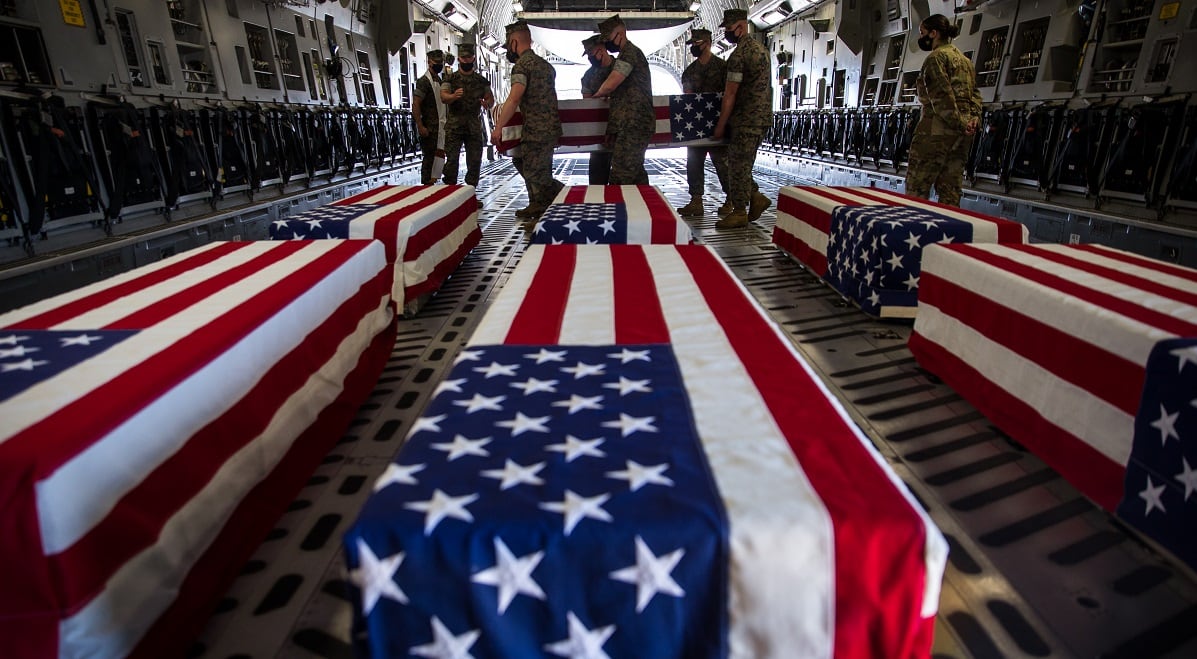The Marine Corps is putting together a “blue ribbon commission” to help restore the institutional knowledge on amphibious operations that was lost after nearly two decades of fighting wars in the Middle East, Marine Corps Commandant Gen. David Berger told reporters May 26.
The Marine Corps is shifting its focus from the Middle East to great power competition and preparing to fight its next war in direct support of the Navy.
But in the past 20 years the Corps has lost significant experience and competency in its ability to conduct amphibious operations, Berger said.
“Twenty, 30 years ago we had a lot of Marines who did a lot of amphibious operations and there was a lot of shared knowledge,” the commandant said. “That pool has shrunk, largely because of the emphasis on the Middle East that did not involve amphibious operations.”
RELATED

The loss of competency may have played a part in the tragic sinking of an amphibious assault vehicle on July 30, 2020, off the California coast while returning to ship after a mechanical raid.
The sinking resulted in the deaths of eight Marines and one sailor.
The service members who died were: Pfc. Bryan J. Baltierra, 18, of Corona, California, a rifleman. Lance Cpl. Marco A. Barranco, 21, of Montebello, California, a rifleman. Pfc. Evan A. Bath, 19, of Oak Creek, Wisconsin, a rifleman. U.S. Navy Hospitalman Christopher Gnem, 22, of Stockton, California, a hospital corpsman. Pfc. Jack Ryan Ostrovsky, 20, of Bend, Oregon, a rifleman. Cpl. Wesley A. Rodd, 22, of Harris, Texas, a rifleman. Lance Cpl. Chase D. Sweetwood, 18, of Portland, Oregon, a rifleman. Cpl. Cesar A. Villanueva, 21, of Riverside, California, a rifleman. And Lance Cpl. Guillermo S. Perez, 19, of New Braunfels, Texas, a rifleman.
A Marine Corps investigation into the sinking found the accident was entirely preventable.
The AAV platoon had not gone through its required predeployment assessment, while only two of the infantry Marines being transported had completed the mandatory evacuation training, the investigation found.
More disturbingly, the vehicles the platoon were set to take on deployment had been taken off the deadline lot and rushed into serviceability.
Multiple vehicles broke down the day of the tragic sinking, a sign of greater problems in the AAV fleet.
A review of the Corps’ AAV fleet conducted after the tragic sinking found that the problems that doomed the AAV were relatively common.
“A majority of the AAVs failed to meet the new inspection criteria,” Lt. Gen. Steven Rudder, commander of Marine Forces Pacific, said in the investigation.
The most common failures were “bilge pump discrepancies, inoperable emergency egress lighting systems and plenum leakage,” the investigation found.
The sinking was a wake-up call to the Marine Corps, reinforcing how many skills the Corps has lost over the past two decades.
“Our bench of expertise, doing it 100 times, has thinned,” Berger said.
Berger said that early in his career he would conduct amphibious operations training every quarter, an opportunity modern Marines do not have.
The Corps is still putting together the panel, but so far expects it to be led by Gen. Thomas Waldhauser, the current commander of U.S. Africa Command, Berger said.
“No one that I know of has more experience than him,” Berger said.
The team will consist of Marines sailors, and likely a civilian with non-military safety experience, Berger said.
Berger expects the group to take several months and conduct a deep dive into all three Marine Expeditionary Forces and will likely spend time with all seven Marine Expeditionary Units.
Ultimately the panel would put together a report that will inform the Marine Corps on what steps it needs to take to rebuild its amphibious experience.




